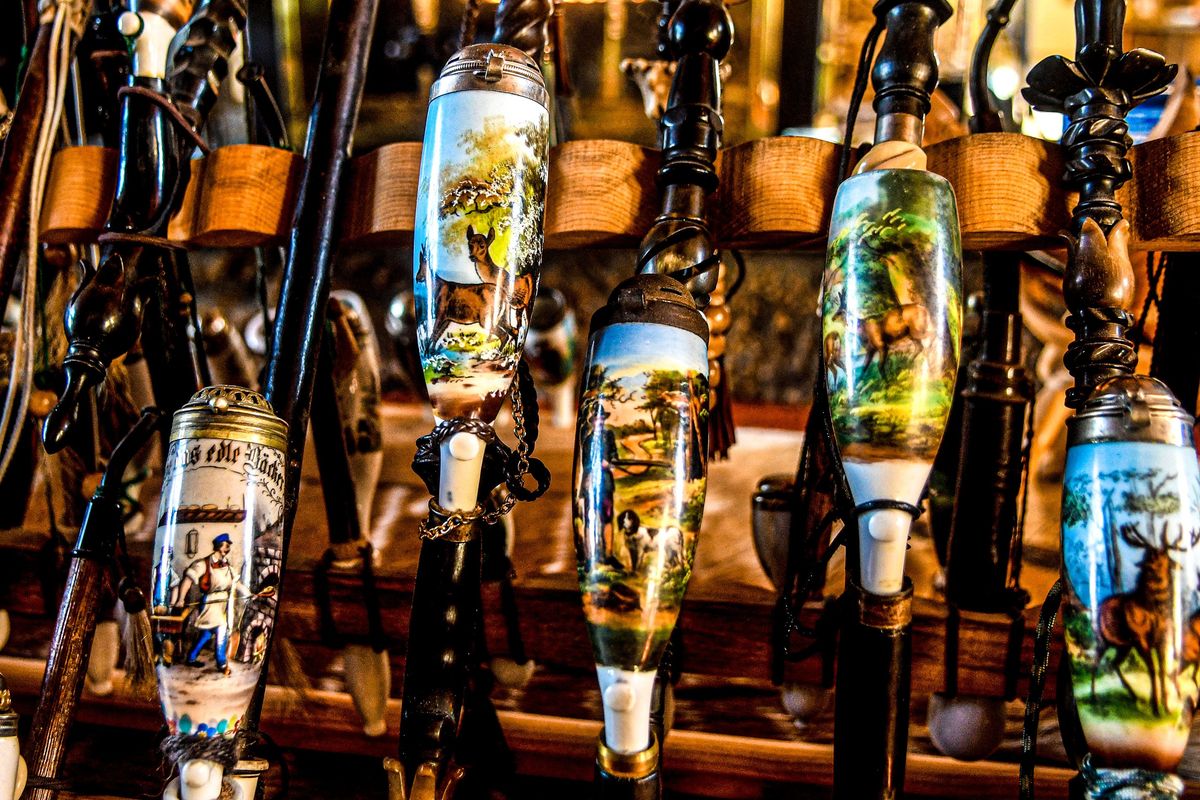The Collector: Gary Bumgarner’s antique pipe collection tells stories of wonderment rooted in history

A love of his German heritage and an appreciation for beautiful artistry inspired Gary Bumgarner to collect porcelain pipes.
“I’m a member of the German American Society and sing with the Concordia Choir,” he said. “A choir member showed me his porcelain pipe.”
Intrigued by the handiwork and history, Bumgarner wanted one himself. Choir members gifted him a couple, a trip to Germany added more, and internet finds contributed to a collection he displays in his home in west Spokane, as well as his cabin on Lake Coeur d’Alene.
“I finally stopped looking because I ran out of space,” he said.
Porcelain pipes were manufactured from the mid-1700s through the early 1920s primarily in Germany, though they were also made in France, Austria, Denmark and the Netherlands. The pipes consist of a hand-painted porcelain bowl, connected to a stem and a hollow chamber made of porcelain, horn or wood. Stems ranged from 1 to 4 feet long and were mostly made of cherry or rosewood.
“Wealthy men all smoked them and they wanted to have the most ornate pipes,” Bumgarner said. “These were expensive gifts.”
The artwork painted on the bowls often commemorated a special occasion or depicted the owner’s interests. Many of the ones in his collection include hunting scenes. Majestic red stags in wooded backgrounds and men clad in lederhosen toting rifles abound.
But most of his favorites feature more sentimental scenes.
One especially ornate pipe details a nobleman next to his steed, his castle on a hill seen in the distance. With help from his friends at the German American Society Bumgarner was able to translate the fine script below the painting.
“It says, ‘God save this beautiful place forever.’ ”
Another celebrates a baker’s lifelong career. The baker uses a long-handled paddle to slide a loaf into a waiting brick oven, while a worker kneads dough, nearby.
“Here’s one that’s particularly touching,” said Bumgarner, reaching into his display rack.
The scene features a soldier, his horse and a lady with a handkerchief dabbing away tears.
“He’s going to battle and saying goodbye to his sweetheart.”
Bumgarner pointed to another pipe portraying a couple in traditional Bavarian garb holding hands.
“This was probably a wedding gift,” he said.
The bowls are topped with metal lids that have their own touch of craftsmanship.
“Smoke caps keep the wind from blowing ash into your eyes,” he said.
The multipieced stems often bedecked with tassels and ribbons are unwieldy, but significant.
Bumgarner smiled.
“The longer the stem, the greater the authority of the owner.”
And for collectors he said having all the parts that fit together adds to the value of the pipe.
However, several pieces in his collection don’t have stems. For example, one gold-rimmed bowl wishes the recipient a “happy birthday” in German, and another shows a hiker pausing to rest with his knapsack .
“Many of these were found in the ashes of burned-out German homes after World War II,” Bumgarner said.
The porcelain bowls and metal smoke caps survived–the ornate wooden stems did not.
For Bumgarner, the appeal of his collection is found in its history, artistry and in wondering about the stories told on the painted porcelain pipes.
“I love the expressions of the artists,” he said. “A lot of imagination went into these. There are no two alike. It makes my heart beat when I see them.”